
IN AN
EMERGENCY,
EVERY DROP®
COUNTS
The innovative DROP eyewash station is a leader in innovation with a drop down dust cover, integrated mirror, integrated eye cup and a secure safety seal.
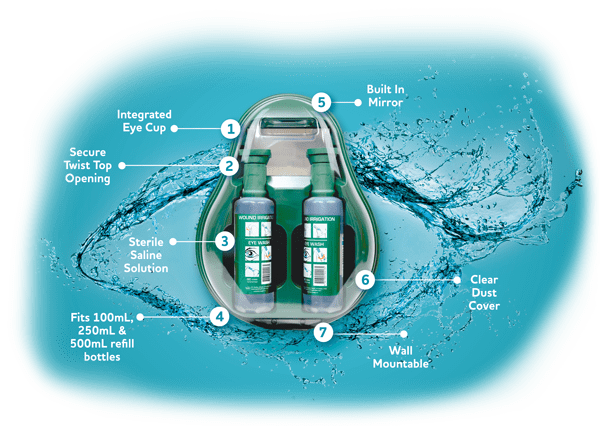
Is your workplace ready for a First Aid Emergency?
In the event of injury or sudden illness, failure to provide first aid could result in serious injury or potentially death. As an employer, you need to ensure that an employee that is injured or falls ill at work receives immediate attention. All workplaces, including the self-employed, are expected to meet the Safe Work Australia regulations to provide adequate and appropriate equipment, facilities and personnel to ensure immediate aid if an employee gets injured or takes ill. Is yours up to standard?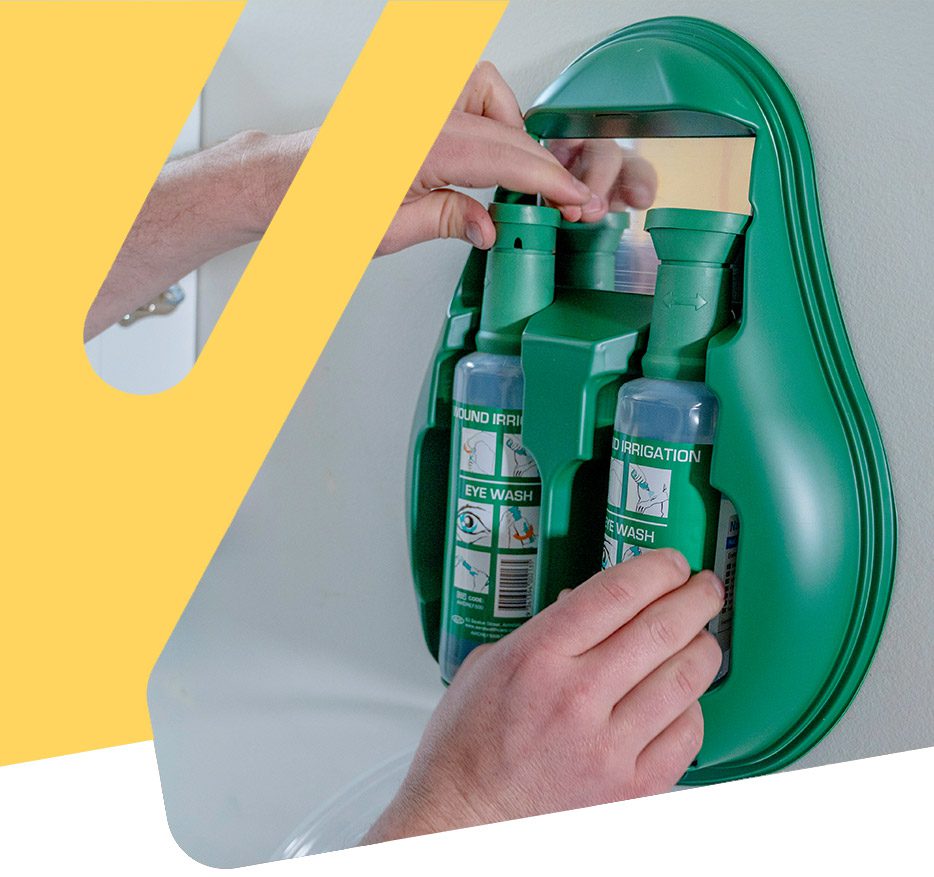
Modules Make It Better
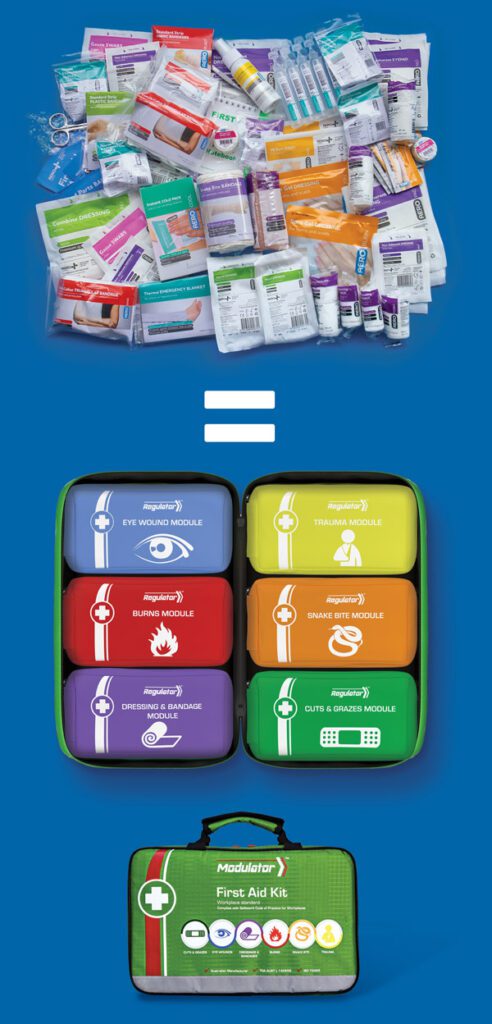
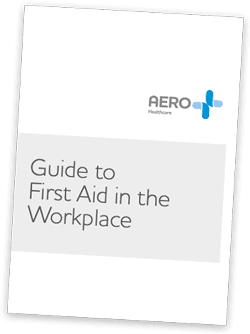
In our guide we discuss:
- What Safe Work Australia regulations require of your business, and how to meet the safety standards.
- How to perform a risk assessment.
- The most common risks in the workplace.
- First Aid Requirement Checklist
- The different types of first aid kits, what yours should include, and how to maintain yours.
- How to budget for first aid products.
Ultimate Guide to First Aid in the Workplace
Every day across the country, first aiders are responding to accidents and injuries in the workplace. Some are responding to minor cuts and wounds, others are dealing with major burns and cardiac arrests.
Some workplaces are higher risk than others; foundries are more hazardous places than offices, it’s a given, however, no workplace is ever truly free from hazards, risks or illnesses. Regardless of regulation, it’s crucial for workplaces to be well stocked with important first aid and life-saving equipment, and have fully trained staff ready to handle any situation. Assess your first aid protocols before they’re needed.
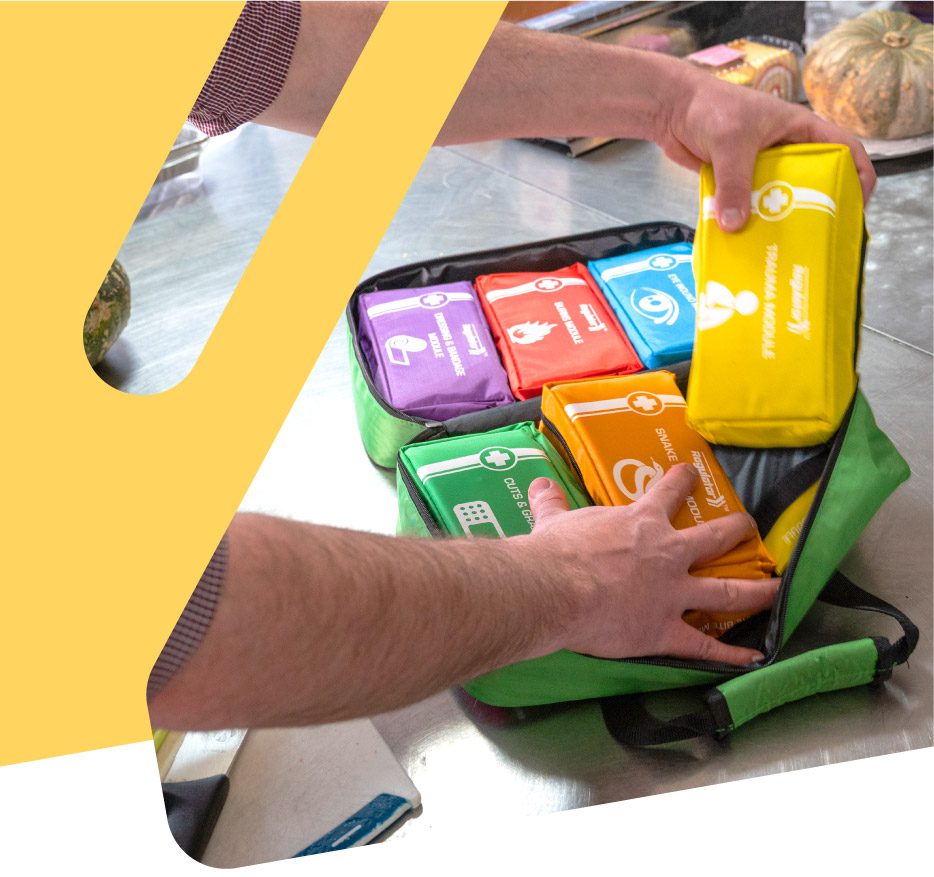
Download your Free First Aid Guide Today
Be more confident with Workplace First Aid with the Ultimate First Aid Guide.
Frequently Asked Questions
1) FIRST AID: WHO IS RESPONSIBLE? A person conducting a business or undertaking (PCBU) has the primary duty under the WHS Act to ensure, so far as is reasonably practicable, that workers and other persons are not exposed to health and safety risks arising from the business or undertaking.
2) FIRST AID REGULATIONS EXPLAINED! WHAT IS ‘WHS’? The ‘Work Health & Safety Act’ (WHS) is the agreed harmonisation of each state and territory’s OHS legislation to develop a new national code of practice by Safe Work Australia.
3) WHO REGULATES AND ENFORCES THE NEW ‘WHS’ LAWS? Safe Work Australia does not regulate compliance and enforcement of the ‘WHS’ code of practice. It is conducted by each state or territory’s body such as WorkCover, WorkSafe or SafeWork etc.
4) HAVE ALL STATES AND TERRITORIES IMPLEMENTED THE ‘WHS’ FIRST AID CODE? Yes all apart from WA and VIC. WA is currently consulting for implementing elements of WHS. VIC has stated that they will not be adopting WHS as it is. AERO Healthcare’s first aid kits are designed to cover the regulations and requirements of each state.
5) HOW OFTEN SHOULD I CHECK? After each use or, if the kit is not used, and the tamper seal is in place then refer to the expiry date on the back of the kit. Without tamper tags, the minimum, the kits should be checked is every 12 months.
6) WHAT DO I CHECK FOR? Ensure that items are in good working order, have not deteriorated and are within their expiry dates and that sterile products are sealed and have not been tampered with. An inventory list in the kit should be signed and dated after each check.
7) DO I NEED FIRST AID SIGNAGE FOR VEHICLES? Aero Healthcare recommends small adhesive signage for the external of vehicles to assist in easily locating first aid equipment and facilities.
8) WHAT FIRST AID SIGNAGE IS REQUIRED? Displaying well-recognised, standardised first aid signs will assist in easily locating first aid equipment and facilities. Further information on the design and use of signs is available in AS 1319 – Safety Signs for the Occupational Environment.
9) IS MY SITE LOW RISK OR HIGH RISK? Low-Risk workplace means a workplace where workers are not exposed to hazards that could result in serious injury or illness such as offices, shops or libraries. Potential work-related injuries and illnesses requiring first aid are generally minor in nature. High-Risk workplace is classified as a workplace where workers are exposed to hazards that could result in serious injury or illness and would require first aid. Examples of workplaces that may be considered high risk are: mobile plants, manufacturing plants, construction, mining, trades, warehousing and food manufacturing.
10) WHEN DOES MY SITE REQUIRE A FIRST AID ROOM? A first aid room should be established at the workplace if a risk assessment indicates that it would be difficult to administer appropriate first aid unless a first aid room is provided.
11) IS MY WORK VEHICLE CONSIDERED A WORKPLACE? Work vehicles are considered a workplace. “A portable First Aid Kit should be provided in the vehicles of mobile workers if that is their workplace (for example, couriers, taxi drivers, sales reps, bus drivers and inspectors)” Source: 2015 First Aid in the Workplace Code of Practice, SafeWork Australia, Section 3.1



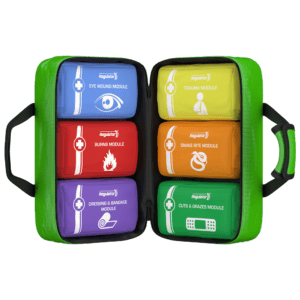
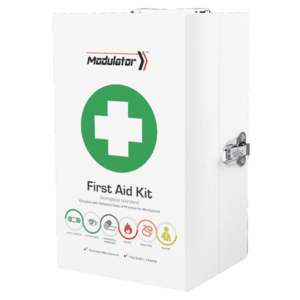
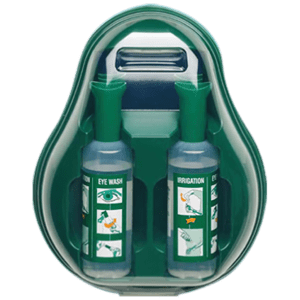
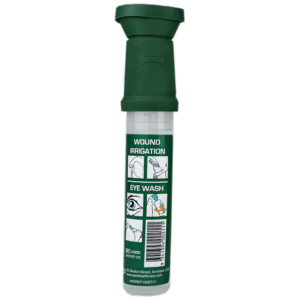
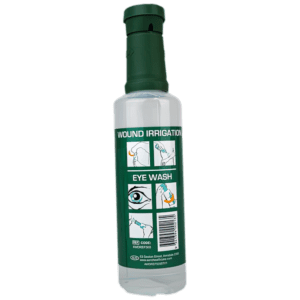
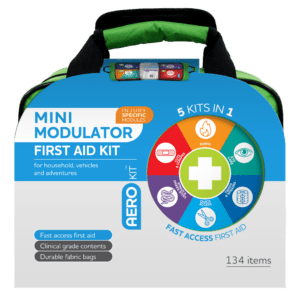 Introducing the NEW Mini Modulator - perfectly sized for taking on your next adventure!
Introducing the NEW Mini Modulator - perfectly sized for taking on your next adventure!
